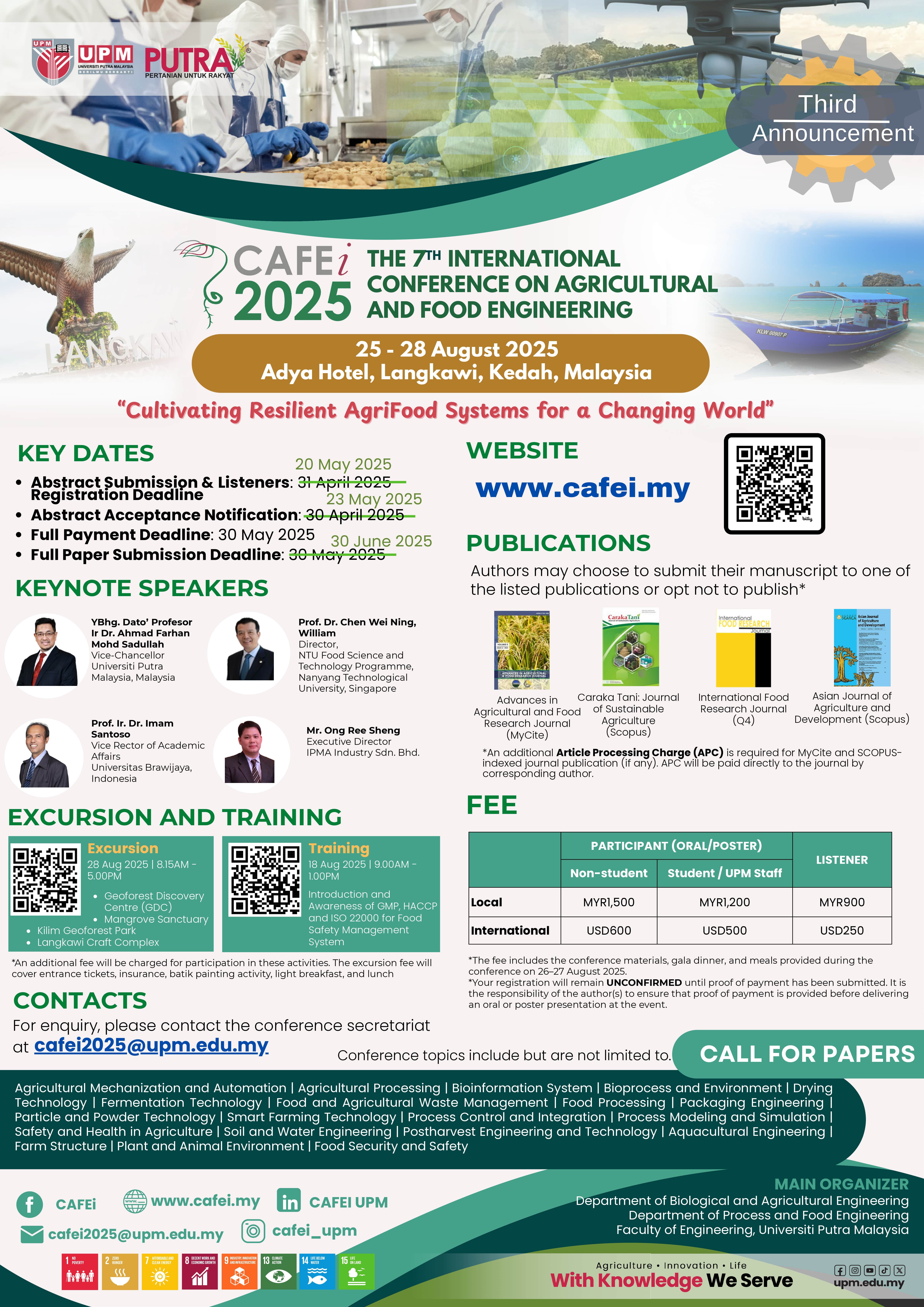Effect of Light Emitting Diode (LED) Spectra on Plant Growth
DOI:
https://doi.org/10.36877/aafrj.a0000135Abstract
The effect of lights generated by red, blue and white light emitting diodes (LED) on growth and development of lettuce were investigated and compared with lettuce without supplemental lighting. A vertical multi-tier hydroponic system was used to grow lettuce. Each tier consisted of 60 heads of lettuce with different LED colour and one tier without LED was used as control. The following measurements on plant physiology were taken: number, length and chlorophyll content of leaves, height and weight of plants. Based on number of leaves, red LED shows the highest number of leaves compared to lettuce under blue, white and control treatment. The similar trend also can be found in the lengths of leaves which shows the highest length produce under red LED. Red LED also produce highest weight of lettuce by 28% as compared to white LED. White LED improved lettuce growth development in the height by 13% and amount of chlorophyll content. Lettuce grown under blue LED shows lowest growth and development compared to lettuce grown under red and white LEDs based on parameters above, and lettuce without LED were died within 2 weeks. This result indicated that the red LED was the most effective spectra in growth response of lettuce plants. This study also demonstrates the effectiveness of LED in improving lettuce growth on vertical multi-tier hydroponic system.
References
Bourget, C.M. 2008. An introduction to light-emitting diodes. HortScience 43: 1944–1946
Choi, H. G., Moon, B. Y., & Kang, N. J. (2015). Effects of LED light on the production of strawberry during cultivation in a plastic greenhouse and in a growth chamber. Scientia Horticulturae, 189, 22-31.
Goins, G.D., Yorio, N.C., Sanwo, M.M., and Brown, C.S (1997). Photomorphogenesis, photosynthesis and seed yield of wheat plants grown under red light-emitting diodes (LEDs) with and without supplemental blue lighting. Journal of Experimental Botany 48: 1407-1413.
Han, T., Vaganov, V. A., Cao, S., Li, Q., Ling, L., Cheng, X., Tu, M. (2017). Improving "color rendering" of LED lighting for the growth of lettuce. Scientific Reports, 7, [45944]. DOI: 10.1038/srep45944
Lefsrud,M.G., Kopsell, D.A., and Sams, C.E. (2008). Irradiance from distinct wavelength light-emitting diodes affect secondary metabolites in kale. HortScience 43:2243-2244.
Lu, N., Maruo, T., Johkan, M., Hohjo, M., Tsukagoshi, S., Ito, Y., & Shinohara, Y. (2012). Effects of supplemental lighting within the canopy at different developing stages on tomato yield and quality of single-truss tomato plants grown at high density. Environmental Control in Biology, 50(1), 1-11.
Mitchell, C.A. 2012. Plant lighting in controlled environments for space and earth applications. Acta Horticulturae 956: 23–36
Miyashita, Y., Kimura, T., Kitaya, Y., Kubota, C., Kozai, T.(1997) Effects of red light on the growth and morphology of potato plantlets in vitro using light emitting diodes (LEDs) as a light source for micropropagation. Acta Hort. 418:169–173
Nanya, K., Ishigami, Y., Hikosaka, S. and Goto, E. (2012). Effects of blue and red light on stem elongation and flowering of tomato seedlings. Acta Hortic. 956, 261-266 DOI:10.17660/ActaHortic.2012.956.29 https://doi.org/10.17660/ActaHortic.2012.956.29
Olle, M., & Viršile, A. (2013). The effects of light-emitting diode lighting on greenhouse plant growth and quality. Agricultural and Food Science, 22(2), 223-234. https://doi.org/10.23986/afsci.7897
Stutte,G.W., Edney, S.and Skerritt, T. (2009). Photoregulation of bioprotectant content of red leaf lettuce with light-emitting diodes. HortScience 44: 79-82.
Yanagi, T., Okamoto, K. & Takita, S. 1996. Effects of blue, red, and blue/red lights of two different PPF levels on growth and mor-phogenesis of lettuce plants. Acta Horticulturae 440: 117–122
Downloads
Published
How to Cite
Issue
Section
License
Copyright (c) 2020 Diyana Jamaludin

This work is licensed under a Creative Commons Attribution-NonCommercial 4.0 International License.
Author(s) shall retain the copyright of their work and grant the Journal/Publisher right for the first publication with the work simultaneously licensed under:
Creative Commons Attribution-NonCommercial 4.0 International (CC BY-NC 4.0). This license allows for the copying, distribution and transmission of the work, provided the correct attribution of the original creator is stated. Adaptation and remixing are also permitted.

This broad license intends to facilitate free access to, as well as the unrestricted reuse of, original works of all types for non-commercial purposes.
The author(s) permits HH Publisher to publish this article that has not been submitted elsewhere.

.png)

.jpg)



